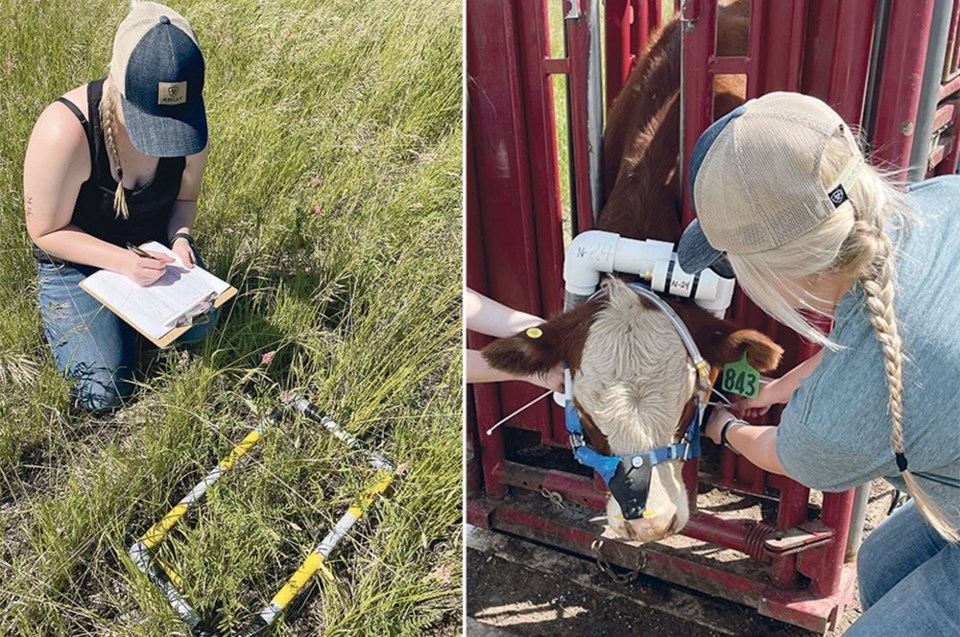A four-year study to identify cattle forages that can withstand conditions like the intense drought of 2021, while also accounting for the potential effects of climate change, is underway through the University of Saskatchewan.
“The agriculture industry is always under increasing scrutiny from consumers to be more environmentally sustainable,” said master’s student Megan Wasden. “So I guess this project is really looking into that…to prove that we are doing something and always trying to increase our sustainability.”
Wasden joined the project this summer under the supervision of Bart Lardner, a professor in the College of Agriculture and Bioresources. Lardner specializes in beef cattle nutrition, forage and pasture management.
The study focuses on two types of perennial forages and two types of annual forages. From there, the researchers looked at the different mixtures of grasses and legumes to see which ones performed best in terms of yields and cattle performance.
“Certainly, one way to reduce the emissions is to have that legume in there,” Lardner said.
Wasden said the research team looked at biomass to see how well each combination of forage produced each year, as well as how they adapted and persisted throughout the trials.
The researchers also looked at the quality of each forage through grazing to see if each one was delivering the needed nutrition to hit a target weight in cattle of half a kilogram to a kilogram per day. To determine this, they weighed the cattle and then put them out to graze.
The team also carried out gas experiments, which involved attaching vacuum systems to the cattle’s halters to sample their breath and burps for levels of carbon dioxide and methane.
Wasden said their 2020 field trials with hybrid bromegrass and alfalfa got the most grazing days with 80, with all the other trials being average or less.
In 2021, the trials had fewer grazing days because of the severe drought, except for the hybrid bromegrass and alfalfa.
“That one was pretty persistent,” Wasden said. “That treatment definitely stood up to the drought conditions better than the rest of the treatments so far.”
The study will continue for another year, but Wasden won’t be on site. She’s busy crunching numbers so far and analyzing data to put it all together for her master’s thesis.
Lardner said he hopes this research will be beneficial to producers.
“I think we can possibly identify those forage mixtures that might provide adequate yield and quality for a beef animal to grow in and perform accordingly,” he said.
Wasden received $16,000 from the Indigenous Graduate Leadership Award and $10,000 from the Keith Gilmore Foundation Prize for Beef Cattle for her research.
“I think she’s a great example of a young ag advocate, going out to not only support her ag community, but also the Indigenous community here in our province, which certainly does have access in control to a lot of resources, a lot of land,” Lardner said.

